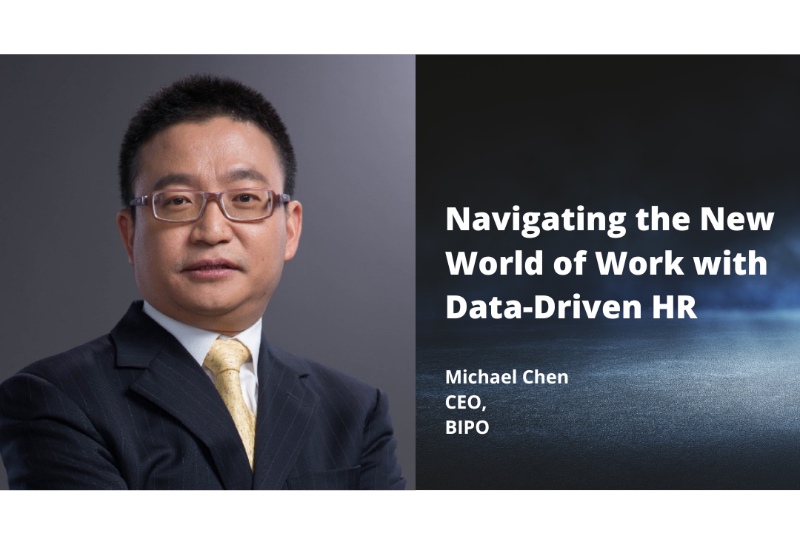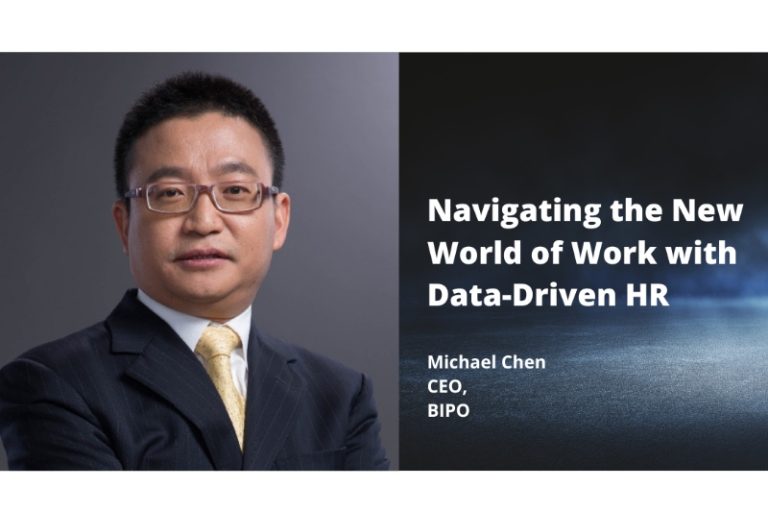Avoiding the pitfalls of decision-making that lack reliable data while steering decisions to achieve business objectives is precisely what people analytics is designed to accomplish.

“Avoiding the pitfalls of decision-making that lack reliable data while steering decisions to achieve business objectives is precisely what people analytics is designed to accomplish.”
Business leaders face a diverse set of challenges – from business operations and revenue goals, global expansion amidst tight border restrictions to creating genuine employee experiences against a volatile global business landscape.
We speak with Michael Chen, CEO of BIPO – a leading, one-stop HR and Payroll solutions service provider with a global footprint across 27 countries.
Two years into the global pandemic, what’s a growing trend you’ve observed?
With remote and hybrid work arrangements here to stay, people analytics is the new norm in workforce management and planning. Increasingly in my conversations with global business leaders in the Asia Pacific, the growing trend points to companies adapting existing data analytics processes to other business areas such as Human Resources.
Traditionally, data analytics has been used by large enterprises and MNCs to predict global and consumer trends. While the pandemic has resulted in gaps that need to be addressed, it has also created opportunities where SMEs and HR teams are now leveraging data to gain insights in areas like compensation and benefits, employee retention strategies, pulse surveys, and employee engagement.
Data Analytics, People Analytics, Workforce Analytics – boon or bane for HR today?
Often compared with data analytics, people analytics is a data-driven approach towards Human Resources management. It involves analysing a range of HR metrics to enable businesses to make data-informed decisions that impact business performance.
One of the biggest wins we’ve seen with clients who have incorporated People Analytics and BIPO’s Business Intelligence tools in their business strategy is better decision-making and accurate benchmarks and forecasting.
How can business leaders and HR leverage data for better decision-making?
Traditionally, decision-making is left to a select few in the senior leadership team. Decisions are based on experience, team consensus, and risk avoidance instead of historical data, leading to an absence of tangible results to the detriment of the organisation.
By combining the art of HR with the science of people analytics, businesses make better-informed decisions to achieve the desired objectives based on measurable metrics aligned with their business and expansion goals.
What the pandemic has given rise to, is a foundation on which business leaders plan and make their decisions with data and analytics at the core.
What are some examples of Data and People Analytics, and how are they used by businesses today?
Applications of people analytics are now integrated into existing HRMS and Enterprise Resource Planning (ERP), leading to a significantly positive impact on compensation and benefits, performance evaluation, attrition, retention, and employee engagement.
People analytics is particularly useful in instances when employee retention rates are consistently poor. Data analysed over 12 months is used to identify key reasons (push/pull factors, for example) to shed light on possible underlying issues such as inadequate leadership or poor engagement. Results may indicate that salary packages and promotions may not be sufficient in addressing the issue. Instead, a better strategy with long-term impact could include coaching, mentoring, and succession planning to ensure engaged and sustainable teams.
Avoiding the pitfalls of decision-making that lack reliable data while steering decisions to achieve business objectives is precisely what people analytics is designed to accomplish.
Tell us what are the misconceptions surrounding data?
The common misconception surrounding big data, data analytics, and BI tools is that they are complex and require technical knowledge for use in real-world situations.
This might be true for legacy BI and data analysis tools. However, with the widespread use of data and advancement in technology, BI tools and platforms have evolved to allow those without the scientific skill and technical background to analyse data in a manner easily understood. Besides providing real-time information for analysis, such platforms also afford simple reports, dashboards, and data aggregation.
As a leading global HR service provider, BIPO is committed to driving innovation in HR technology. Our award-winning, cloud-based HR Management System integrates BI, data, and people analytics tools, empowering HR leaders to address critical business and people-related needs.
BIPO on hrtech.sg Marketplace & Singapore HRTech Marketmap.
About the author:

A lawyer by training and an entrepreneur at heart, Michael is the CEO of BIPO.
In addition to driving new grounds in HR innovation and service delivery, Michael is also passionate about contributing to and elevating the standards of the HR industry. A well-respected thought leader in the HR space, Michael is highly sought after for his insights and expertise as a speaker at international forums and platforms.
About BIPO:
BIPO is a leading one-stop, global HR service provider offering payroll and HR management solutions.
Our mobile-first, cloud-based HR software is designed for companies across industries to manage their HR operations efficiently and improve staff productivity. Each application is customisable to your business needs and integrated into an all-in-one platform to automate HR processes.
Leverage on our platform to stay agile and cost-effective while engaging your talents at every stage of the employee lifecycle.
Why BIPO
- Trusted by over 2,800+ businesses and 380,000+ users
- Receive direct support from our local offices
- Cutting-edge technology, award-wining SaaS
- Seamless integration with 3rd party platforms
- One-stop solution hub for HR outsourcing services
- We provide both software and HR services
BIPO HRMS Features
- BIPO Personnel
Personalised hub with shared company calendar and news. Easy-to-configure organisation charts and employee profiles. - BIPO Payroll
Fully compliant with local regulations such as IRAS, CPF, and MOM. Simple payroll processing with automated calculation and multi-currency transactions. - BIPO Leave Management
Customise leave policies, multi-approval structures with on-the-spot approval. Track team’s leave status with calendar view. - BIPO Time & Attendance
Simple clock-in and out using mobile app, biometrics, or iris scanners. Easily manage complex, multi-shift patterns with real-time tracking. - BIPO Safe Entry
Contactless check-in with AI facial recognition and temperature scan, integrated with payroll and attendance. Capture information for contact tracing, enhancing workplace safety. - BIPO Claims
Supports multi-currency claims. Submit and track claims with flexible approval settings on-the-go. Seamless expense management and processing. - BIPO Training
Manage the right training and upskilling for your employees with easy tracking of progress and achievements. - BIPO Appraisal
Evaluate and review performance with customisable templates and assessment frameworks.




